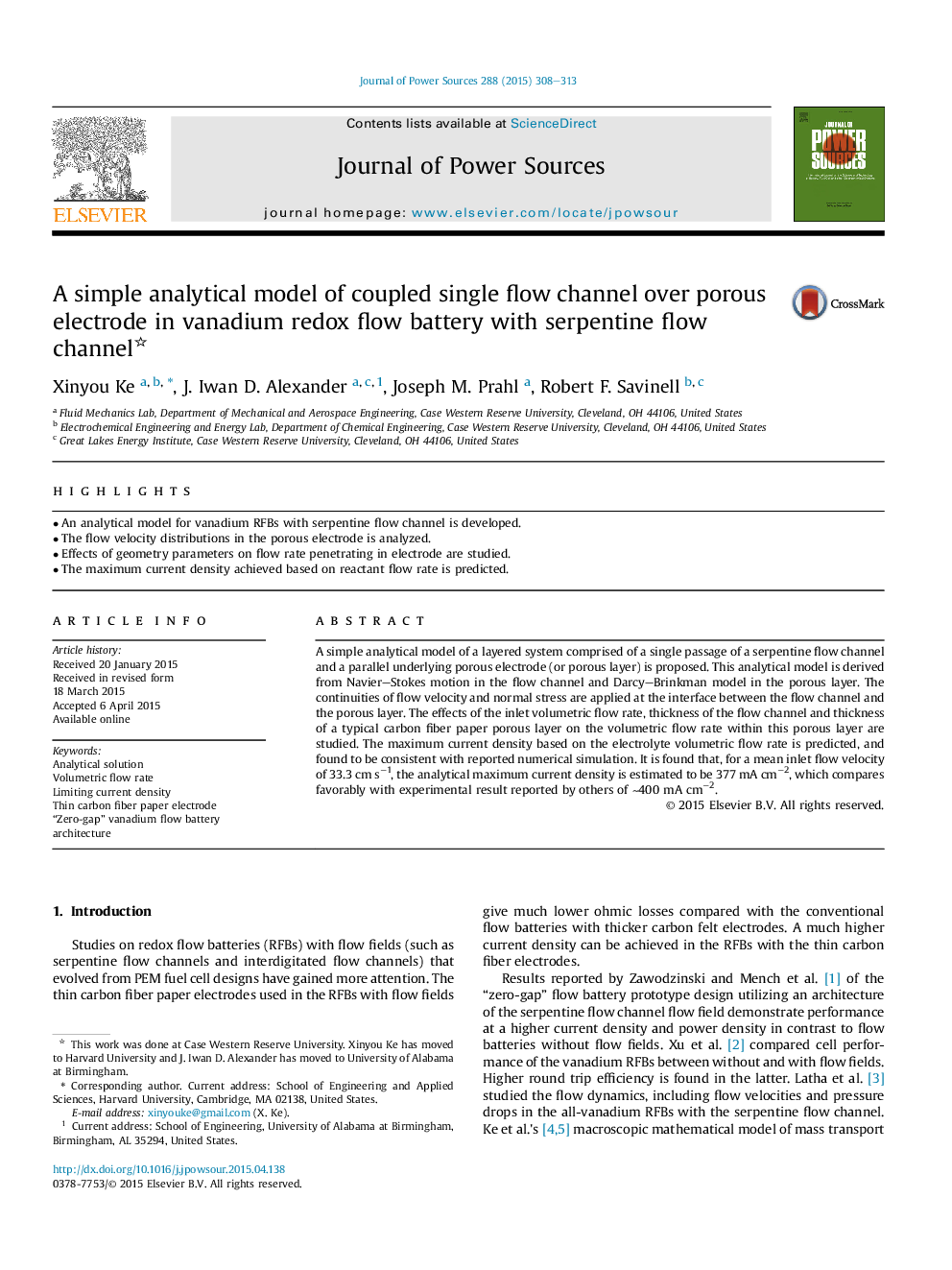| Article ID | Journal | Published Year | Pages | File Type |
|---|---|---|---|---|
| 7732323 | Journal of Power Sources | 2015 | 6 Pages |
Abstract
A simple analytical model of a layered system comprised of a single passage of a serpentine flow channel and a parallel underlying porous electrode (or porous layer) is proposed. This analytical model is derived from Navier-Stokes motion in the flow channel and Darcy-Brinkman model in the porous layer. The continuities of flow velocity and normal stress are applied at the interface between the flow channel and the porous layer. The effects of the inlet volumetric flow rate, thickness of the flow channel and thickness of a typical carbon fiber paper porous layer on the volumetric flow rate within this porous layer are studied. The maximum current density based on the electrolyte volumetric flow rate is predicted, and found to be consistent with reported numerical simulation. It is found that, for a mean inlet flow velocity of 33.3 cm sâ1, the analytical maximum current density is estimated to be 377 mA cmâ2, which compares favorably with experimental result reported by others of â¼400 mA cmâ2.
Related Topics
Physical Sciences and Engineering
Chemistry
Electrochemistry
Authors
Xinyou Ke, J. Iwan D. Alexander, Joseph M. Prahl, Robert F. Savinell,
